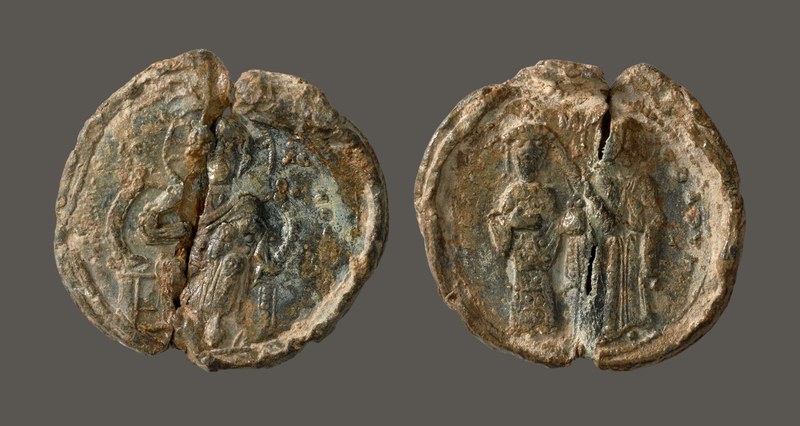
An early supporter of Isaakios’s rebellion who eventually sided with opponents of his reforms, Constantine Doukas nevertheless succeeded the former general through the intervention of Michael Psellos. After taking office, he returned to a modus ante quem by reopening the Senate, neglecting the military, debasing the coinage, and instituting heavy taxation in order to pay for lavish generosity to monasteries and individuals. Without imperial support the army was unable to fend off its growing number of enemies. In Italy the Normans, under Robert Guiscard, were moving against the Byzantine province, and in the Balkans Cumans and Uzes raided across the Danube, and the Hungarians conquered Belgrade. The greatest threat came from the East where the Seljuk Turks had conquered Mesopotamia and were moving into Armenia. In 1067 they broke through the Byzantine defenses, and advanced deep into Byzantine Asia Minor, sacking the important city of Caesarea. John Doukas, his brother, and the grandfather-in-law of Alexios I Komnenos formed a regency with the Patriarch John Xiphilinos during the period of Constantine’s serious illness of 1066/67, at the end of which the emperor died. Constantine’s poor governance provoked harsh judgment even from his benefactor Psellos, who otherwise spoke well of his character.

Constantine was the first emperor to consistently depict himself full-length on seals since the second reign of Justinian II, at the beginning of the eighth century (there is one specimen of Isaakios full-length as well). The emperor is shown wearing a crown and loros and holding a labarum. Constantine preserved the obverse of Christ Emmanuel favored by his predecessors. A later design shows the first depiction of Christ enthroned to appear on imperial seals on the obverse, and the emperor, being blessed by the Mother of God on the reverse. This was the first time that a divine figure accompanied the imperial portrait on seals. In addition, although not appearing on his seals, several issues of coins depict Constantine with his wife, Eudokia Makrembolitissa, the first appearance of an empress on coins with her husband since Theodora with Theophilos in the first half of the ninth century. For the seals of Eudokia's family see the Doukas Dynasty in the Dynasties of Empire section.























































